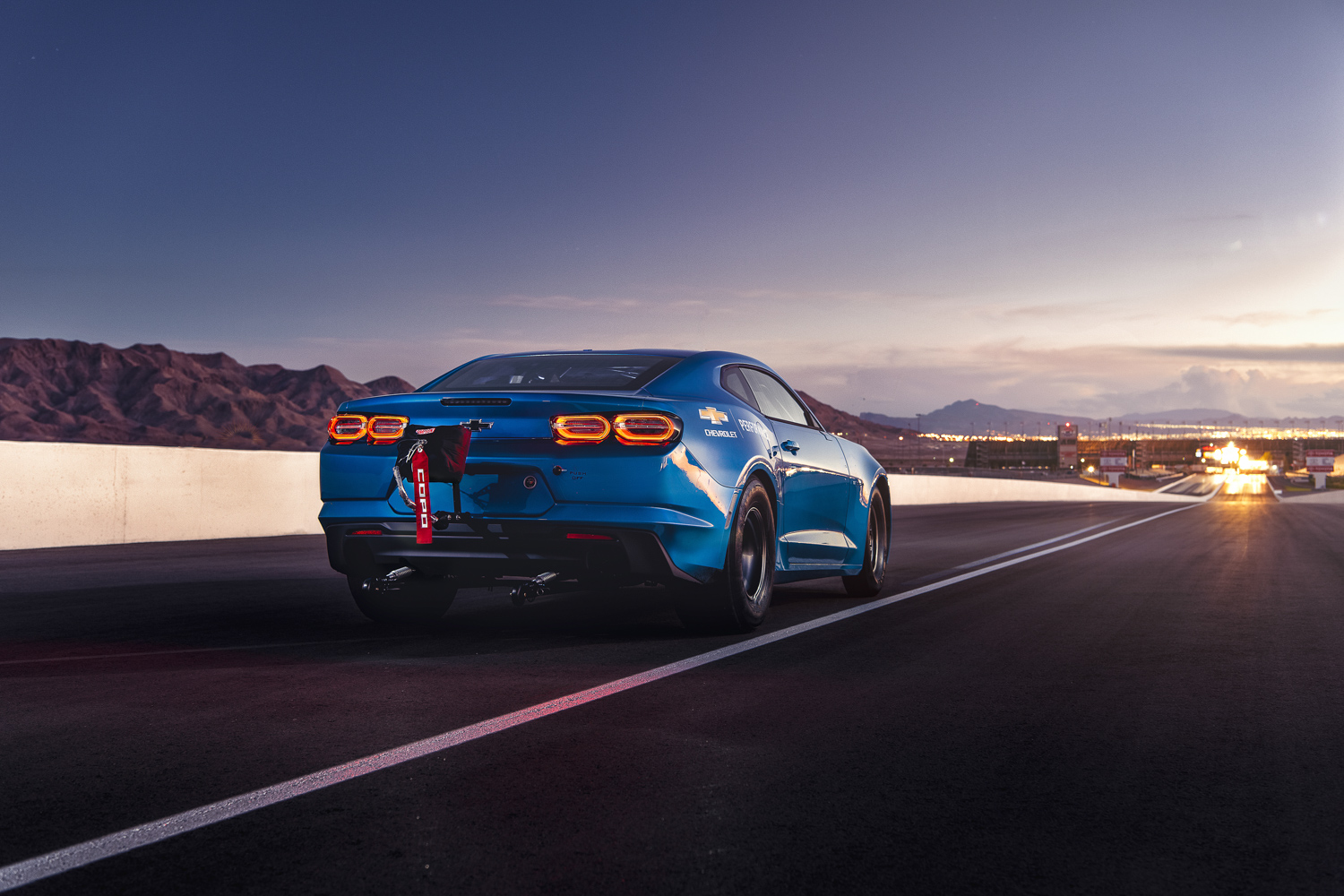Is SEMA at a dead end? The answer may be electrifying
If your dream is a hot rod built by the marriage of a vintage muscle car to a giant flame-spitting V-8, then there were literally hundreds of companies at the 2018 Specialty Equipment Market Association (SEMA) show in Las Vegas that can help you realize it. As there were in 2017. And 2016… and for much of the show’s 51-year history. But if you want to build something like the Icon’s most recent Derelict, a 1949 Mercury coupe running a 400-horsepower electric motor powered by an 85 kW/hour Tesla battery, or like the electric 700-hp Chevrolet eCOPO Camaro unveiled by GM at this year’s show, you’re outta luck.
You could comb all 2400 booths in the 1.2 million square feet of exhibit space without finding much in the way of electric conversion components. Instead, this year’s show was pretty much business as usual, meaning a celebration of the American V-8 that carried on without much heed paid to anything happening in the world outside of the convention center. Jonathan Ward, the founder of Icon and the Derelict’s creator, quipped that the most innovative thing he saw this year was floor mats for your cupholders.
That’s one reason he was excited to finish the two-year build of the Derelict and get it to the show. “I’m bored with it all,” he says, looking out a hall teeming with some of SEMA’s 160,000 annual attendees. “This place needs something new.”
Future historians writing the story of the SEMA show may look back at the 2018 edition as the point at which electric hot rodding started its journey to becoming a full-fledged industry. Icon, which is best known for transforming old Toyota Land Cruisers and Ford Broncos into modernized luxury showpieces, has so much demand from its customers for electric creations that Ward figures it will be half his business within five years. “I don’t know if electrics are the future of street rodding, but I want to find out,” Ward says. “And I’m the kind of dumbass who will hemorrhage money to find out.”



The problem is the suppliers and the mechanical knowledge aren’t widespread yet. Ward is hoping the Derelict will inspire others, who will help grow the industry that produces high quality components and systems for electric conversions, as well as shops that are as adept at handling 440-volt battery packs as they are at honing 440 Mopar blocks. Sure, Ward acknowledges, there are some small shops doing conversions today, but after scanning the landscape, he decided that the range and reliability aren’t up to Icon’s lofty standards yet. “You drive all the way down the mountain from Big Bear, recharging all the way, and the thing is going to catch on fire,” he says of most electric conversions. Outside of the factory built EVs from Tesla, GM, and others, “the control systems, the thermal management, they aren’t there.”
The Derelicts started out as relatively simple projects, then stuffing a modern V-8 and other upgrades into the 60-year-old Merc that Ward found on Craigslist. But the 35-year-old client, who has purchased other cars from Icon, decided that instead of a Coyote V-8 or a GM E-Rod LS3, he wanted to do something different. Eager to build an electric, Ward says he was nonetheless careful to explain the hazards. “I was super excited to do it, but let’s be clear, I told him, you’re a guinea pig.”




Because Tesla wouldn’t sell Icon a new battery, Ward had to go to the junkyard to salvage a pack from a wrecked Model S, which gives the circa-5000-pound Derelict a 120-mph top speed and a range up to 200 miles. Icon used a variety of small shops to source components such as the digital instrument cluster and the control boxes, and AMRacing, a high-performance motor boutique in Hood River, Oregon, for the car’s pair of electric motors, which together make 470 pound-feet of torque. Ward designed the Derelict’s electric power system to be modular, so that as new technology comes along, he can swap in improved components without overhauling the whole car. “The technology is moving so fast now that we wanted to make sure it was backwards compatible,” he says.
Ward knew that putting a black panel with blinking lights under the car’s hood would only further alienate the old-timers, so he assembled the battery array and associated control boxes into a sort of V-8-shaped sculpture that is media blasted and polished to a chrome-like gleam. “I only wish we had put a Go-Pro camera and microphone under the hood for the show,” he says. “The comments are priceless.”
Writing control software and developing a heat management system that uses a dedicated air-conditioning unit consumed the bulk of the two-year build and cost “way too much,” Ward admits. But he sees the Derelict as an investment. “The car is a test bed for future builds. I want to start doing FJs and Broncos with this stuff, and there are customers who want it.”
Indeed, come back to SEMA in five or ten years and the show may look completely different.












